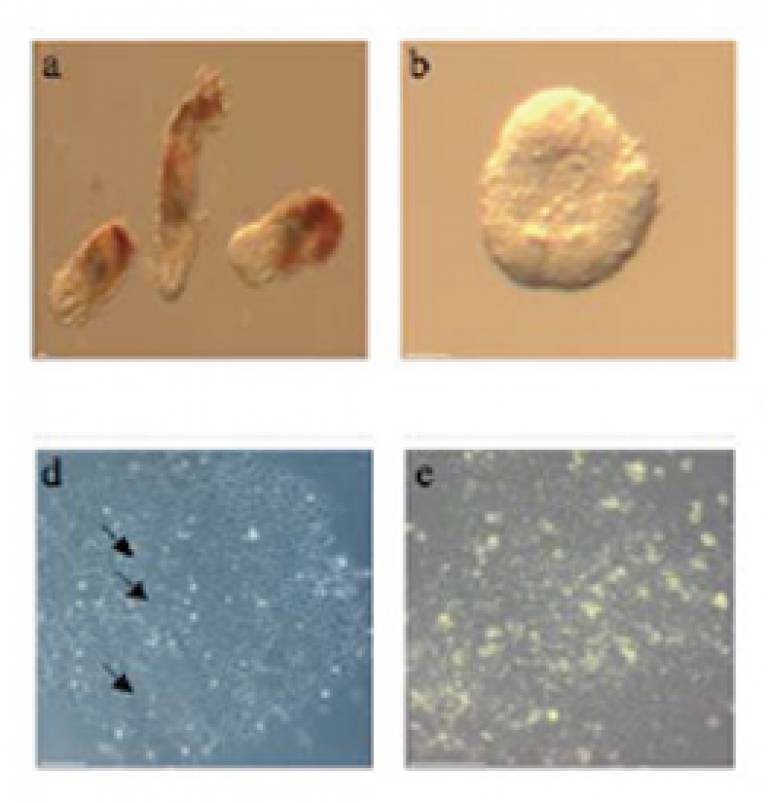'Missing link' stem cells discovered
28 June 2007
UCL researchers have contributed to a study that has discovered a new type of embryonic stem cell in mice and rats, which is very similar to human embryonic stem cells.

The findings give scientists a greater understanding about the way stem cells work. Published in 'Nature' online, along with another independent study that verifies the discovery, the findings are likely to accelerate understanding of stem cell development, help the derivation of stem cells in other species - including livestock and disease-prone mice used in research - thereby providing better models for researchers involved in stem cell research.
Up until now, embryonic stem cells derived in humans and mice had looked different and not behaved in the same way. The main thing they had in common was their pluripotency - their ability to turn into any type of cells such as nerve and blood cells. But how the mouse and human stem cells maintained this state was actually different and they required very different techniques for growth in culture.
Teams based at Cambridge University and Oxford University found that when mouse stem cells are derived from the epiblast - the innermost cell layer - of the one-week-old rodent embryo, rather than from the early blastocyst stage (3-4 days after conception) they resembled human embryonic stem cells and had many of the same properties.
The stem cells taken from this later stage of development could be maintained using the same growth factors as those used in the culture of human embryonic stem cells. The two British teams were able to produce stable cell lines which were used to work out how the novel cells remain pluripotent or begin to specialise during early development. In addition, the novel stem cells also looked very similar to human embryonic stem cells under the microscope.
Further studies were then undertaken at the Cancer Research UK Viral Oncology Group (UCL Wolfson Institute of Biomedical Research) and the US National Institutes of Health to analyse the molecular characteristics of the newly-derived stem cells.
The UCL team conducted gene expression microarray analysis to obtain transcriptional profiles of mouse embryonic stem cells, mouse epiblast stem cells and two different developmental stages of mouse embryos. Dr Lucy Smithers (UCL Cancer Research UK Viral Oncology Group) said: "These profiles were compared to determine the relationship between embryonic stem cells, epiblast stem cells and the stages in embryo development that they most closely resembled. The data show that despite having properties in common with embryonic stem cells, and expressing the same core transcription factor genes, epiblast stem cells are more closely related to their source tissue, the epiblast, than to embryonic stem cells and are a novel type of stem cell."
Co-author Professor Roger Pedersen (Cambridge University) said: "Epiblast stem cells constitute the missing link between mouse and human embryonic stem cells. On a molecular level, epiblast stem cells are more similar to human embryonic stem cells than to mouse embryonic stem cells. The differences between mouse and human embryonic stem cells that we had attributed to species differences may actually come down to the developmental stages from which the cells emerge. Our hope is that pinpointing the developmental stage when human embryonic stem cells originate will help scientists who are using stem cells to develop cures for injuries and disease."
To find out more, use the links at the bottom of this article
Image: (Clockwise from top left) Mouse embryo, dissected mouse epiblast, mouse epiblast colony day 2, mouse epiblast colony p32. Credit: Gabrielle Brons
- Links: 'Nature'
 Close
Close

